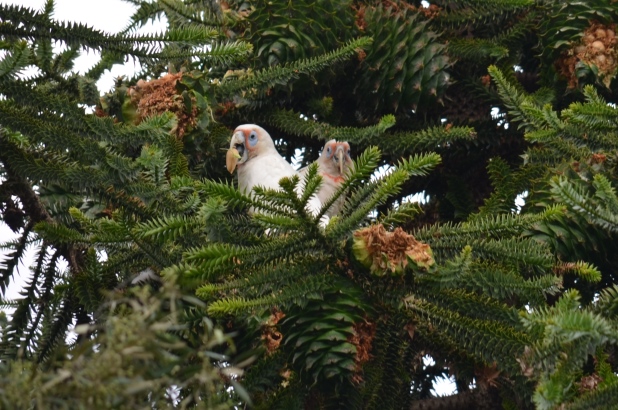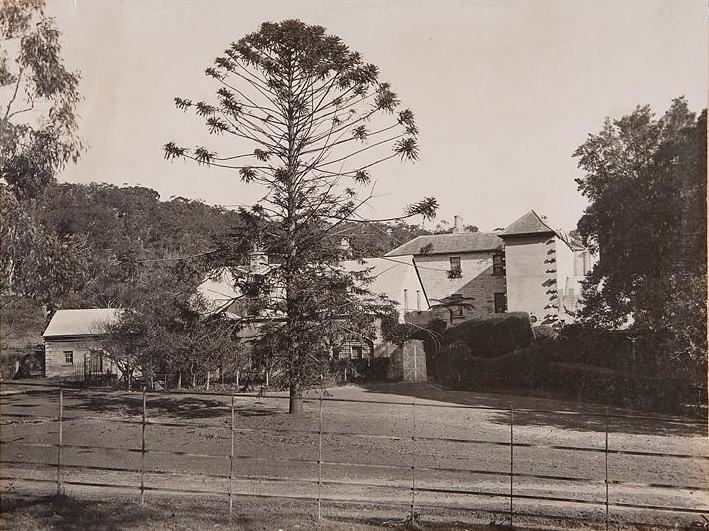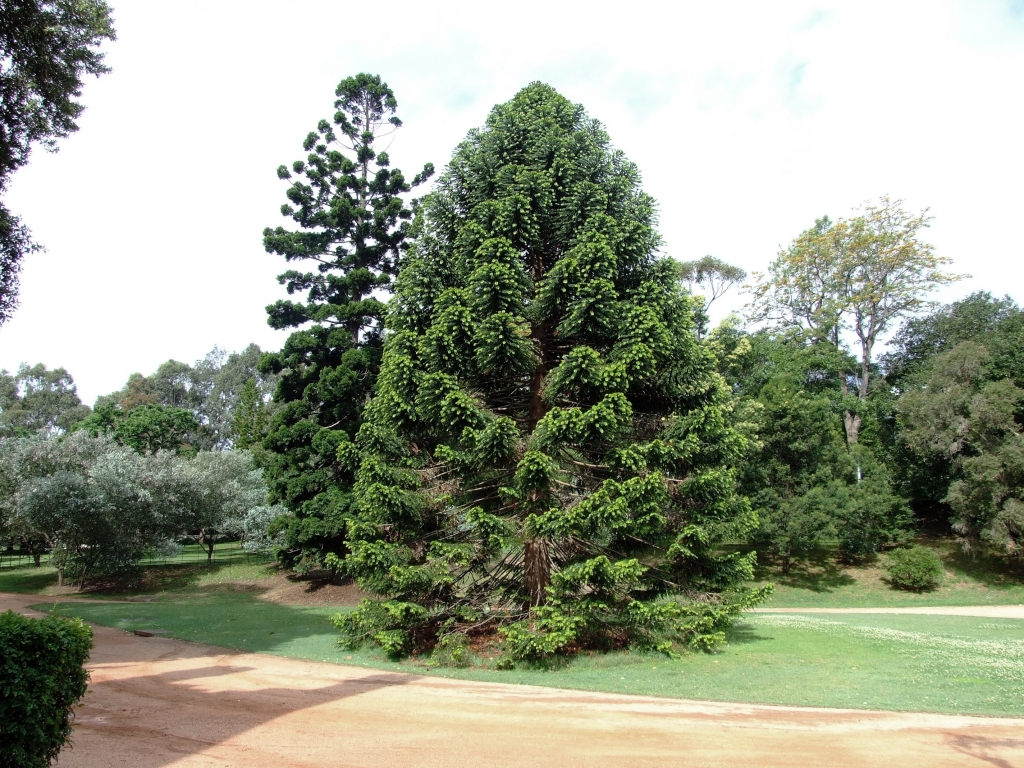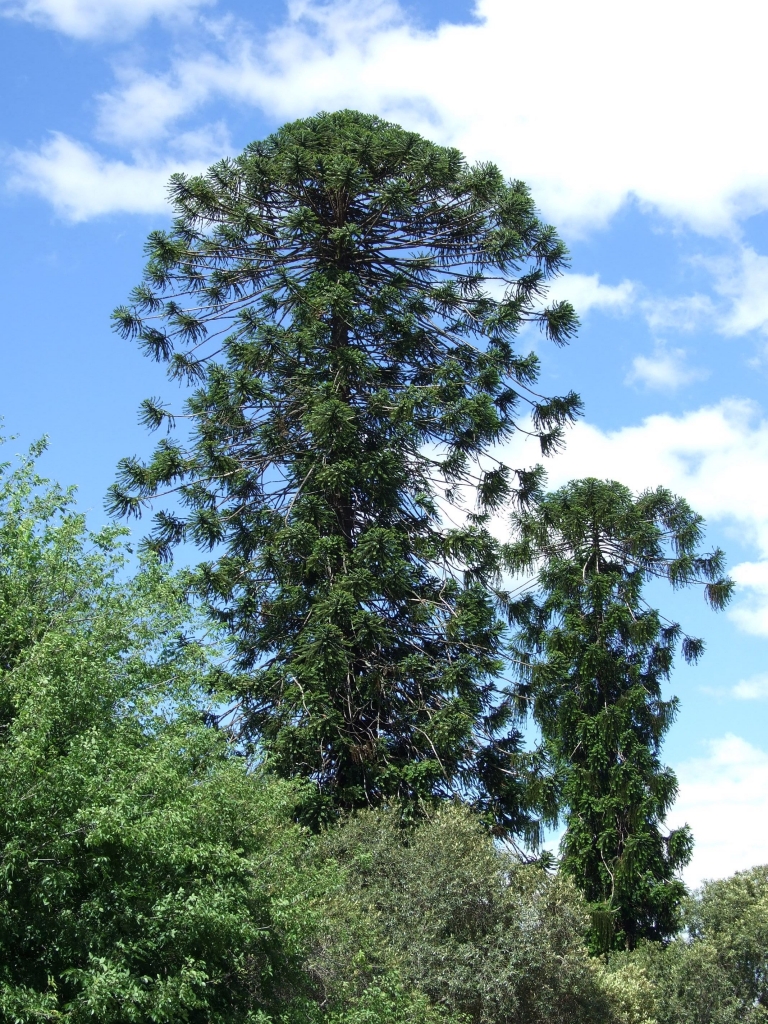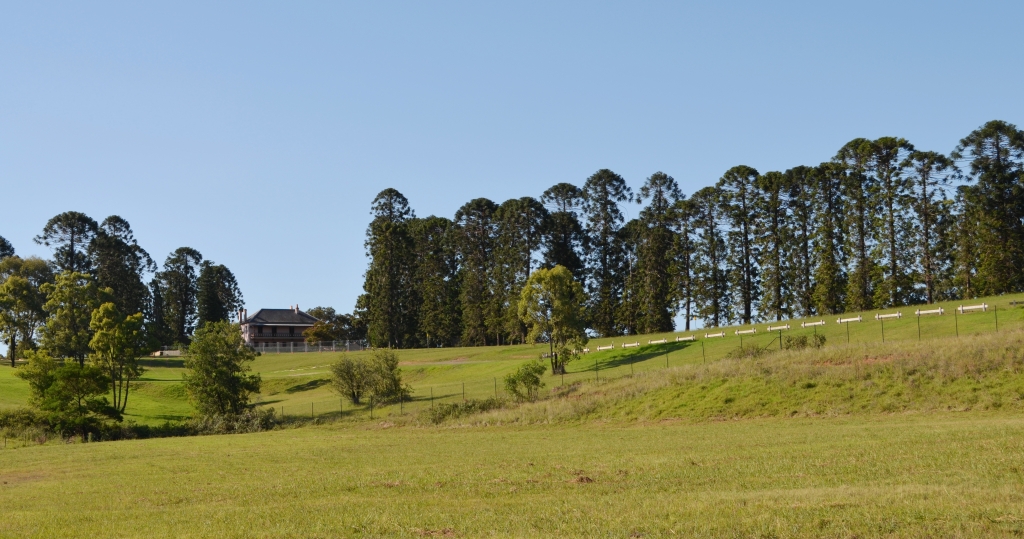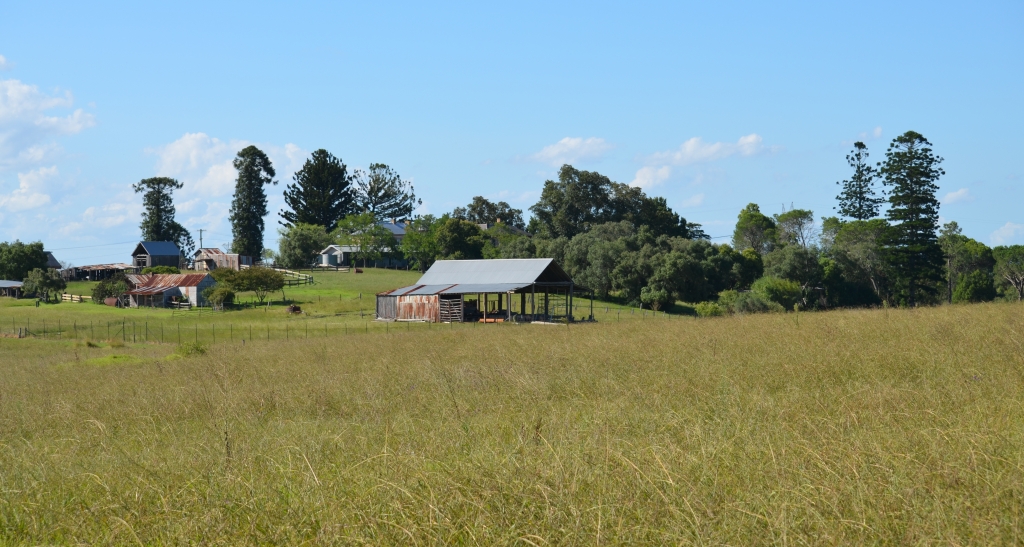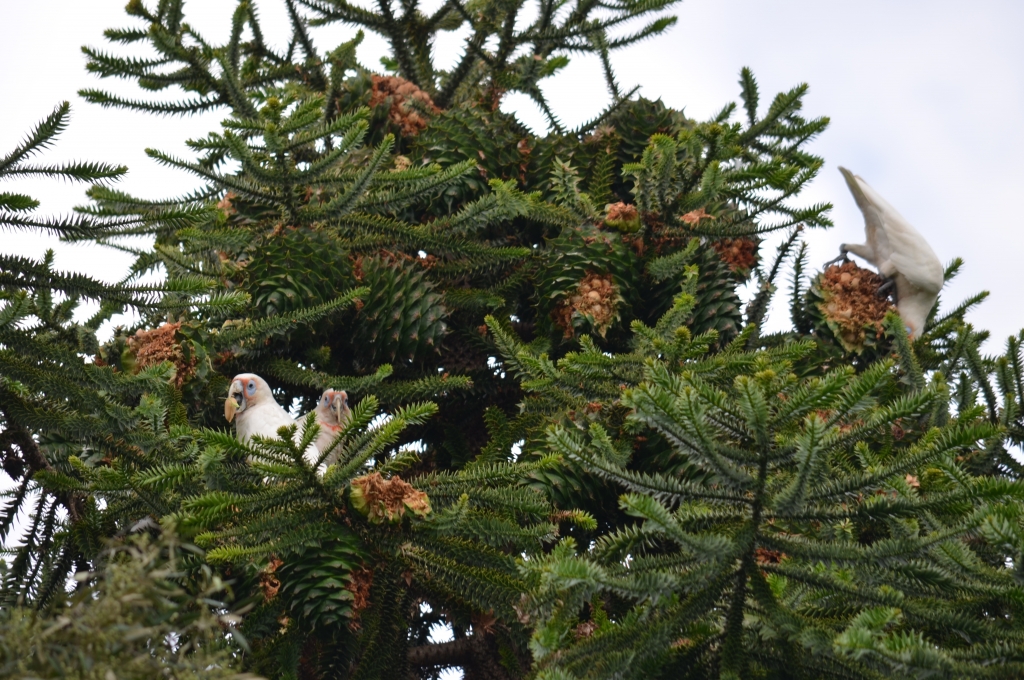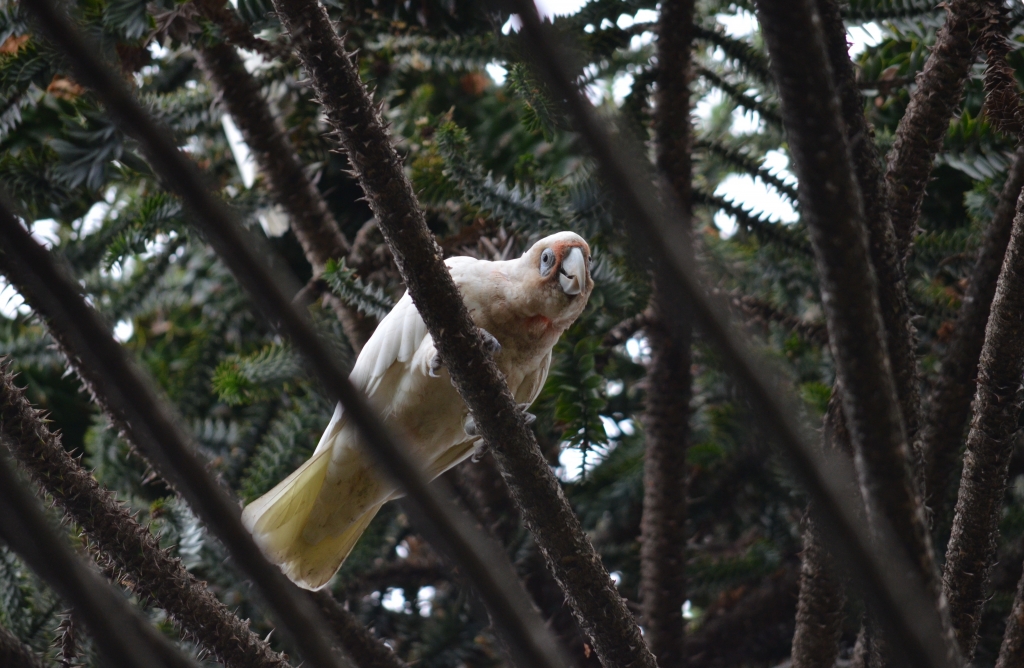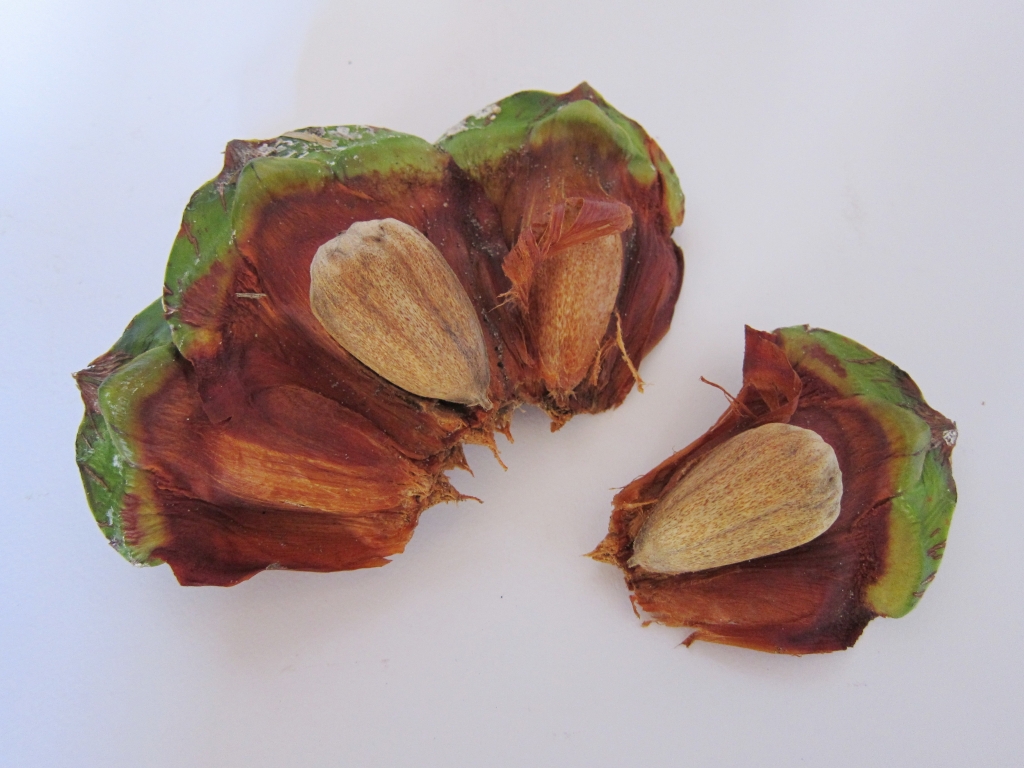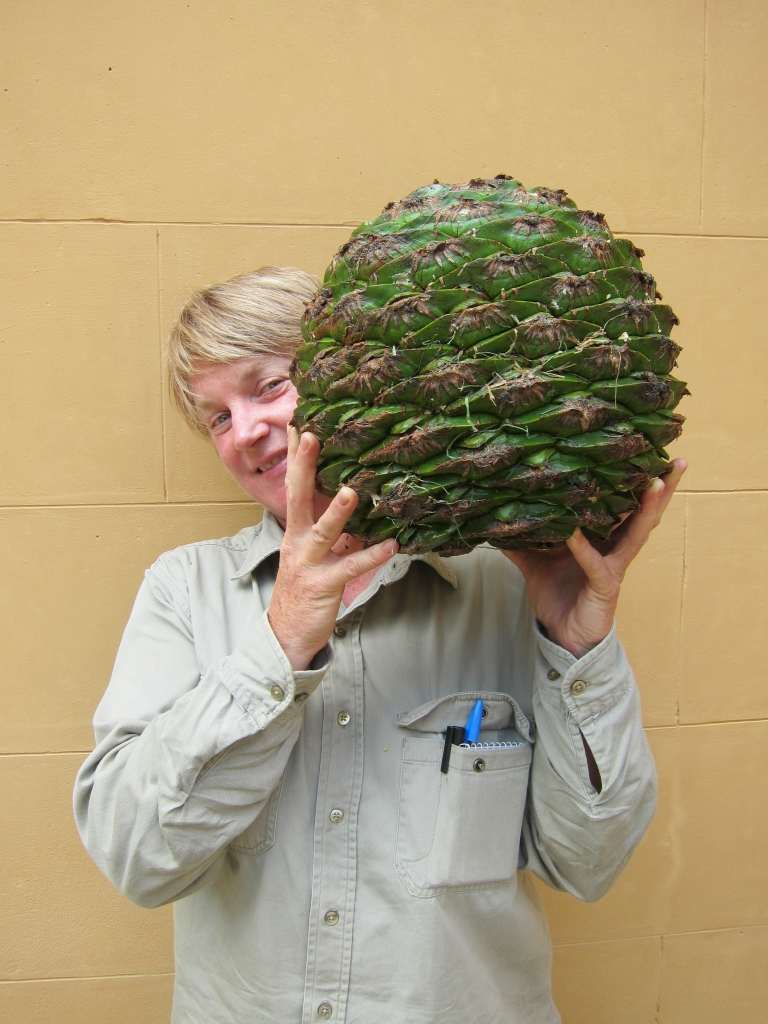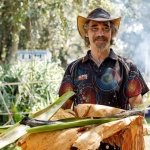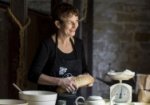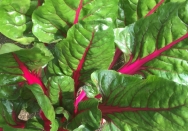As this year’s Bunya season draws to a close it’s time to look at this extraordinary bush food, and its role both in Indigenous societies and in 19th century landscapes – just be careful not to stand too close!
Here at the Cook and the Curator we often talk about the role of food as a unifier, around which people gather and share, and the celebrations and rituals of life are enacted – think of how food is so important in the Lunar New Year which has just been celebrated (or in some calendars about to be celebrated), and Christmas / New Year before that. For thousands of years in south-eastern Queensland the harvesting of the seeds of one particular tree – the Bunya pine – drew people together from considerable distances to conduct trade, rituals and dances, for diplomacy – and to feast.
A landscape icon
Unaware of its long history and value as a food source, to many people outside southern Queensland the stately Bunya Bunya Pine is one of the ‘signature trees’ of Australian colonial landscapes; surprisingly you even see them growing in old Tasmanian gardens where the winters are very cold. A native of the biologically rich Bunya Mountains – traditionally known as Booburran Ngmmunge – these striking, statuesque trees have a sharply pointed scaly ‘leaf’, and, when young, an elegant tapering conical form [1]. When they mature, corresponding to the point in their lives when they would emerge from the surrounding tree canopy, they develop their characteristic flared ‘mushroom’ top. The tree has something of a reputation as a ‘widow-maker’; despite their size its heavy cones can fall almost silently, plummeting to the ground (and I speak from experience, having almost been clobbered by one some years back!)
This tree grows in the carriage loop at Vaucluse House where it replaced the long-lost 19th century specimen seen above. Planted in 1982 it is losing the ‘pine-like’ conical shape of its youth and taking on the column-like appearance of middle age:
… while these majestic trees to the east of Elizabeth Farm are in their full maturity:
In later 19th century landscapes Bunyas were also planted as avenue trees, as were the closely related ‘Monkey Puzzles’ in Victorian England. Two rare surviving examples of these perilous drives (you would never dare use them in summer!) are at Horsley Park, west of Sydney, and Bella Vista, which is not far from the Rouse Hill Estate. You can see the latter clearly on the east side of the the Windsor Road near the junction with the M2.
In this distant view of Camden Park you can see the contrasting forms of the dark green Bunyas (Araucaria Bidwellii) and other Araucarias, quite distinct from the surrounding eucalyptus. The spindly examples on the left have been shredded by cockatoos. For a 19th century traveler such trees were a sure sign that a house stood nearby:
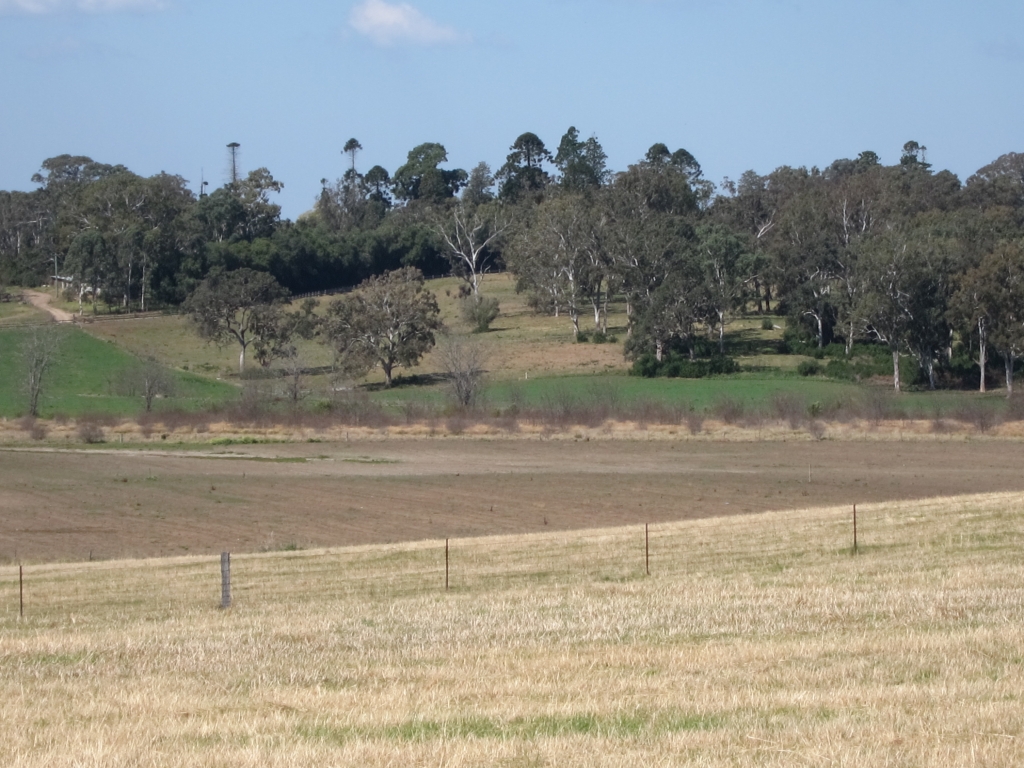
Distant view of Camden Park with distinctive silhouettes of the Bunya pines. Photo Scott Hill © Sydney Living Museums
Similarly at Rouse Hill House several Bunyas and Hoop pines form a distinctive line across the ridge top. They are best seen from the Regional Park to its south:
Sometime after 1873 when William Charles Wentworth was buried at the family’s mausoleum near Vaucluse House, an avenue of bunyas was planted leading back to the house. It didn’t survive the suburban subdivision that took place after 1910, and it seems the bunya in the carriage loop was removed before 1920 by the house’s new Trustees.
Other varieties of Araucaria grown at Rouse Hill and Vaucluse Houses are the iconic Norfolk (Araucaria heterophyla), Cook (A. columnaris) and Hoop (A. Cunninghamii) Pines. What we don’t have is the South American ‘monkey puzzle’, Araucaria araucana, the tree named for the Araucanos Indians and after whom the genus as a whole is named. Scientifically, the Bunya is named for John Bidwill (1815-1853), first director of the Sydney Botanical Gardens (albeit briefly owing to a bureaucratic mix-up) and a significant ‘plant hunter’. The Hoop is named for Bidwill’s fellow botanist Allan Cunningham (1791 – 1839).
A moving feast
Every 3 to 4 years (or more when they’re advanced) the Bunya produces massive cones, weighing up to 10 kilos (or more!), and containing a multitude of large white nuts. The female cones which contain the seeds form at the crown of the tree, and can come crashing down without warning. As a result, many specimens have been removed from public and private gardens. For the Indigenous tribes-people of the Bunya mountains and its surroundings this was traditionally a time of great spiritual significance and feasting, with the nuts eaten raw, roasted or pounded to make a flour and baked into a ‘bread’. Invited to share in the bounty by message sticks and smoke signals, very large numbers of people gathered from considerable distances, and oral histories even record visitors from West and South Australia and the Northern Territory. [2]
On January 3rd, 1847, the expedition of Ludwig Leichardt encountered a large group of people heading towards the area where the trees grew:
The whole of these people were on their way to the Bunya Bunya country, for the purpose of obtaining that very remarkable fruit, the product of the Araucaria Bidwellii [sic]. Perhaps I shall be better understood by representing it as a species of the Norfolk Pine, Araucaria excelsa. The present species is, however, much larger than the latter kind, with large, feather-like branches; altogether, perhaps a more magnificent tree it is difficult to conceive.
The fruit is as large as a common-sized cocoanut, and, when roasted, the taste is equal, if not superior, to a mealy potato. It is only produced in large quantities every third year, when the various tribes meet for many miles round to collect and eat it…. The Bunya bunya tree is confined to a narrow belt of elevated country on the coast range, averaging from twelve and a half miles wide by twenty-five in length, and in no other part of Australia has this plant been found. [2]
The last large scale gathering took place in 1902. [3]
A feast for all – well, the birds anyway!
At Vaucluse House we fence off the areas around the trees when they fruit. At Elizabeth Farm we also install bamboo fences, but the fruit rarely gets to fall; instead, the local Corellas move in for a feast. Their powerful beaks easily shred the bright green outer cone, and tear into the individual pods to get at the edible seed within. The ground is littered with the discarded hollow, papery husks. The tree nearest the tearooms alone produced over 20 cones, and as I write the birds are still in residence after five weeks.
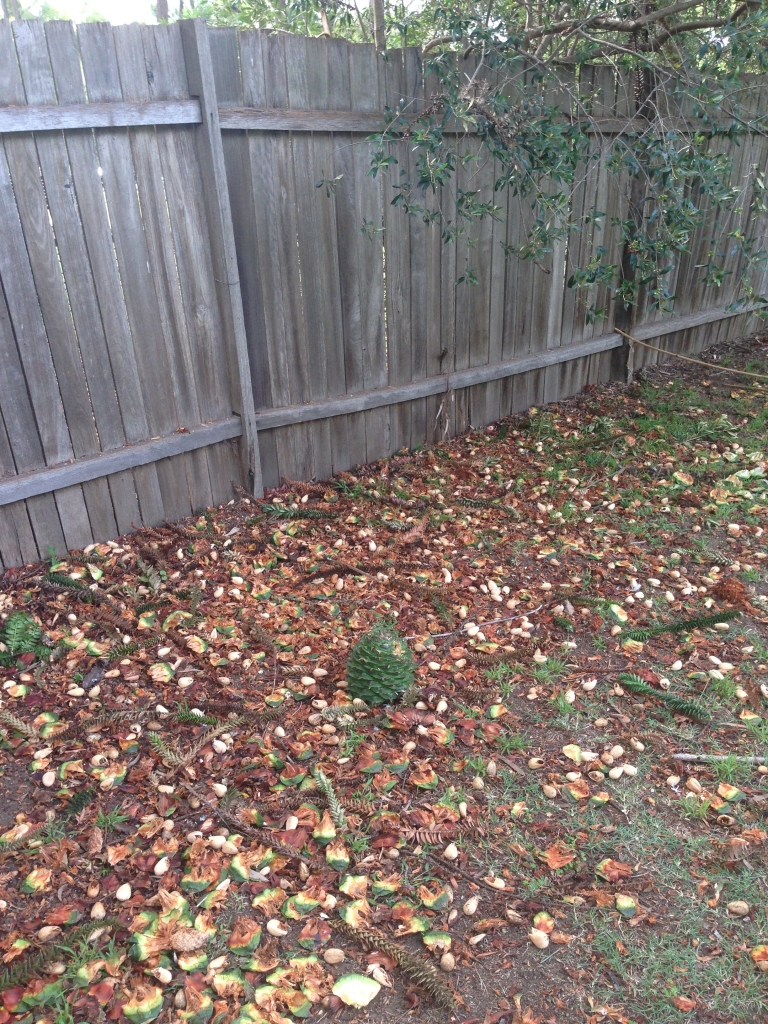
Debris from demolished Bunya cones, devoured by the corellas at Elizabeth Farm. Photo Scott Hill © Sydney Living Museums
How do they taste?
So how do they taste? A few years ago we tried the seeds of a cone that fell at Vaucluse. Getting the seeds out and prepared was time consuming, but well worth the effort. First you need to pull the cone apart. If you wait a few days it starts to dry and the individual scales start to come apart from each other; wait a week or more and the whole pod just falls apart – but you risk the seeds drying out and losing their flavour.
The scale segments are arranged in a tight spiral, and once you’ve got one out the whole comes apart quite easily. The individual, dusty-cream coloured pods are quite hard; to get the actual seed out we boiled the pod for 30 minutes till it was soft. A knife easily slit open the husk and the large seed slid out. In appearance it looks like a large pine nut (which are themselves from a stone pine cone).
And how do they taste? To me they taste like a mix of a pine nut and a macadamia. Colleagues’ and visitors’ opinions ranged from “like a chestnut” or “a cashew” to “a potato” or “roasted parsnip”, and yes one wag pronounced they “taste just like chicken”. The seeds – particularly if they are a bit older – can also be roasted whole in an oven or on hot coals, after which the sheath cuts open very easily. They make a delicious pesto; just substitute for the usual pine nuts. Ground to a flour-like meal – called nyangti – they can make a bready dough and be baked as a damper or cake. A few minutes with your search engine will find you any number of recipes and cooking techniques. If you have your own favourites we’d love to hear about them. (We’d have experimented this year but the corellas didn’t exactly leave us many ingredients.)
That’s not a Bunya cone; THIS is a Bunya cone!
The Bunyas at Vaucluse House date to the 3rd quarter of the 19th century. While they often miss a year, or three or more completely, when they do fruit they can still produce some surprises. This monster fell in February 2012 – and weighed over 16 kilos!
[1] The largest population of Bunya trees are those on the Bunya mountains themselves, but two small areas also support populations in Northern Queensland. (See the Bunya Mountains Aboriginal Aspirations and Caring for Country Plan, 2010, p16).
[2] Daniel Bunce, Australasiatic Reminiscences of Twenty Three-years’ Wanderings in Tasmania and the Australias including Travels with Dr Leichardt in North or Tropical Australia, Melbourne, J.T. Hendy, 1857; p111-113
[3] See ‘Bunya Mountains Gathering‘ from the Cobb & Co. museum website.
Second helpings
The vital and ongoing significance of the Bunya mountains area and of the Bunya pines to their traditional custodians is explained in the Bunya Mountains Aboriginal Aspirations and Caring for Country Plan (Markwell Consulting for the Bunya Mountains Elders Council and Burnett Mary Regional Group, 2010) and includes accounts passed down through oral histories of the great gatherings. You can read it online here. The text also includes recipes (see p.18).
